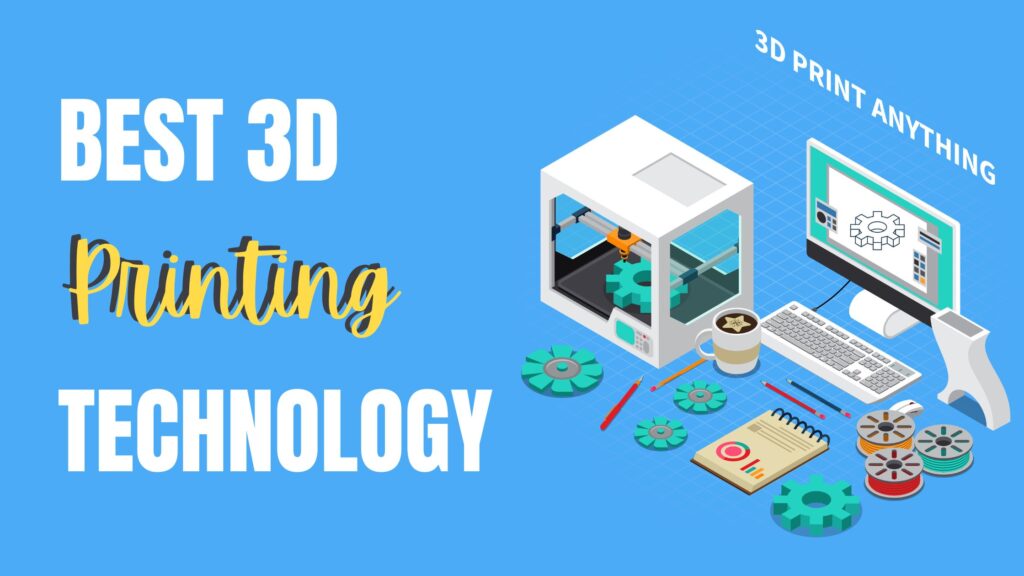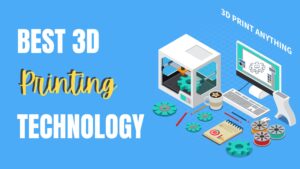What is 3D Printing?
3D printing, also known as additive manufacturing, is a process of creating physical objects from digital models. It works by building up layers of material, such as plastic, metal, or resin until the final object is complete. 3D printing has numerous applications in various industries, from manufacturing to healthcare and even art. Technology is advancing rapidly, making it more accessible and affordable for individuals and businesses alike. With 3D printing, it is possible to create complex geometries and customized designs that would be difficult or impossible to produce using traditional manufacturing methods.
There are several types of 3D printing, which include:
- Stereolithography (SLA)
- Selective Laser Sintering (SLS)
- Fused Deposition Modeling (FDM)
- Digital Light Process (DLP)
- Multi Jet Fusion (MJF)
- Poly Jet
- Direct Metal Laser Sintering (DMLS)
- Electron Beam Melting (EBM)
In order to be able to effectively decide which technology has to be used, let us first understand the advantages and disadvantages of each technology.
1. SLA
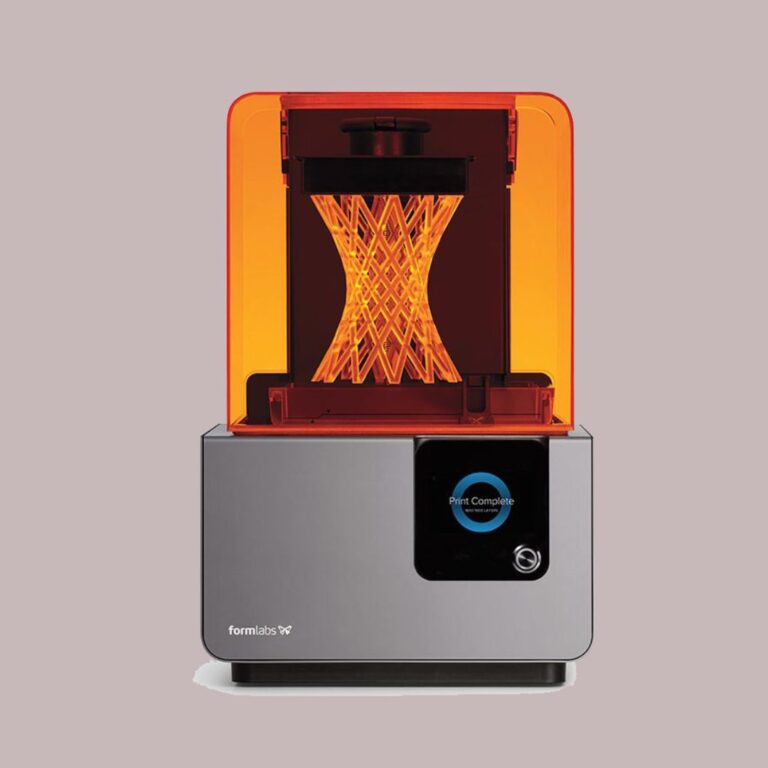
Stereolithography is a type of 3D printing technology that uses a liquid resin that is cured by a light source to create solid parts layer by layer. It was one of the first additive manufacturing technologies developed and is still widely used today. Stereolithography is known for producing high-resolution parts with smooth surface finishes. It is commonly used in industries such as aerospace, automotive, medical, dental, and product design and development.
The advantages of using SLA technologies are:
- Relatively fast production
- Good for complex model
- Minimized waste material
- Best for Miniatures
- Short Print Time
- Easy Ergonomics
- Variety of Material Choice
- Easily Portable
- Offers high accuracy and resolution, making it ideal for producing complex and intricate parts with fine details
- Parts produced with stereolithography have a smooth surface finish, reducing the need for post-processing
- Production of high-quality prototypes
- Quickly and cost-effectively runs small-scale production
The disadvantages of using SLA technologies are:
- The printed parts are affected when in touch with moisture and heat
- Layers might cause stair stepping instead of a smooth surface
- Not environmental friendly
- Might not be suitable for large prints as limited by the size of the build platform
- Parts produced with stereolithography tend to be brittle
- Lower impact strength compared to other 3D printing technologies
- Requires the use of liquid resin, which can be costly and hazardous to handle
2. Selective Laser Sintering (SLS)
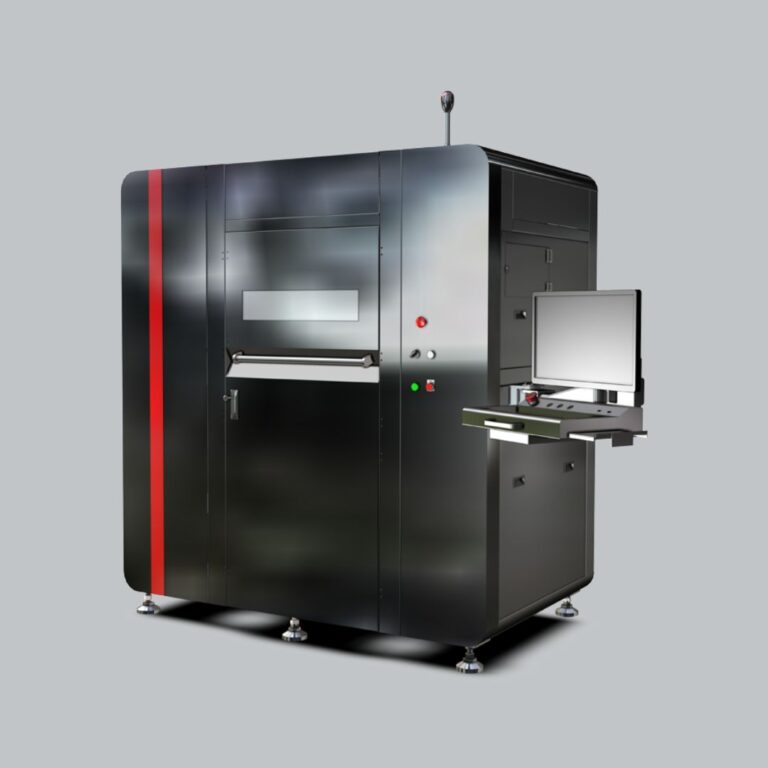
Selective Laser Sintering (SLS) is a 3D printing technology that uses a high-powered laser to fuse small particles of material together to form a solid object. SLS has similar properties to SLA but it uses nylon-based powdered material to 3d print a product layer by layer. At each layer, a coat of powered layer is made which is then laser sintered as per the requirement of the pattern. SLS parts are made from thermoplastic material and hence are durable and stronger but have a rough surface finish. It is commonly used in industries such as automotive, aerospace, and medical.
The advantages of using SLS are:
- Can produce complex geometries and internal structures
- A wide range of materials can be used
- High accuracy and precision
- Parts can be functional and durable
- Highly reliable, precise, and one of the fastest ways of producing prototypes and small-volume batches of parts
- No support structure is required
- The powered layer used in between has strong adhesion properties so the product has isotropic properties
The disadvantages are:
- Can be expensive
- The surface finish may require post-processing
- Large parts may require a lot of time and energy to produce
- Limited build size
- Does Not have a smooth surface finish
- The shrink rate is high
- Available choices in a material are limited
- Higher wastage
3. Fused Deposition Modeling (FDM)
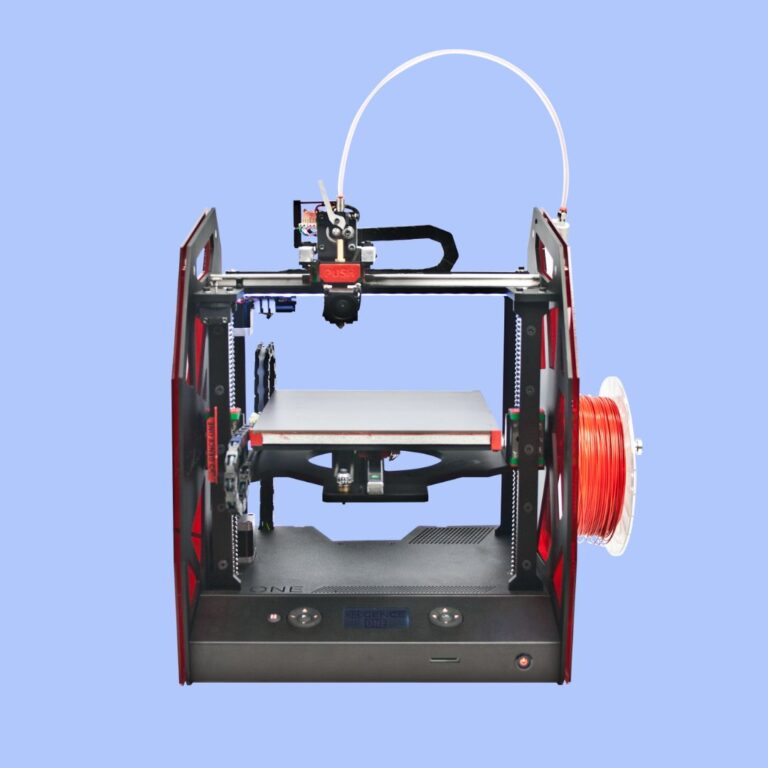
Fused Deposition Modeling (FDM) is an additive manufacturing technology used to create 3D objects by melting and extruding a thermoplastic filament layer by layer. FDM produces products by using production-grade thermoplastics. A thermoplastic filament is pushed through an extruder and is deposited in layers where needed to form a 3d product. FDM-produced objects have a rough surface finish and they lack strength. Industries that use FDM include automotive, aerospace, medical, and consumer products.
The advantages of FDM are:
- Affordable and accessible technology
- Wide range of materials available
- Capability to produce large and complex parts
- Reusable filament
- Easy ergonomics
- Availability of choice in materials
- Compact design
The disadvantages are:
- Lower resolution and surface quality compared to other printing technologies
- Limited accuracy and precision
- Susceptibility to warping and shrinkage during printing.
- Nozzle clogging
- Takes more time in printing
- The problem with adhesive layers
- Weak in strength
4. Digital Light Process (DLP)
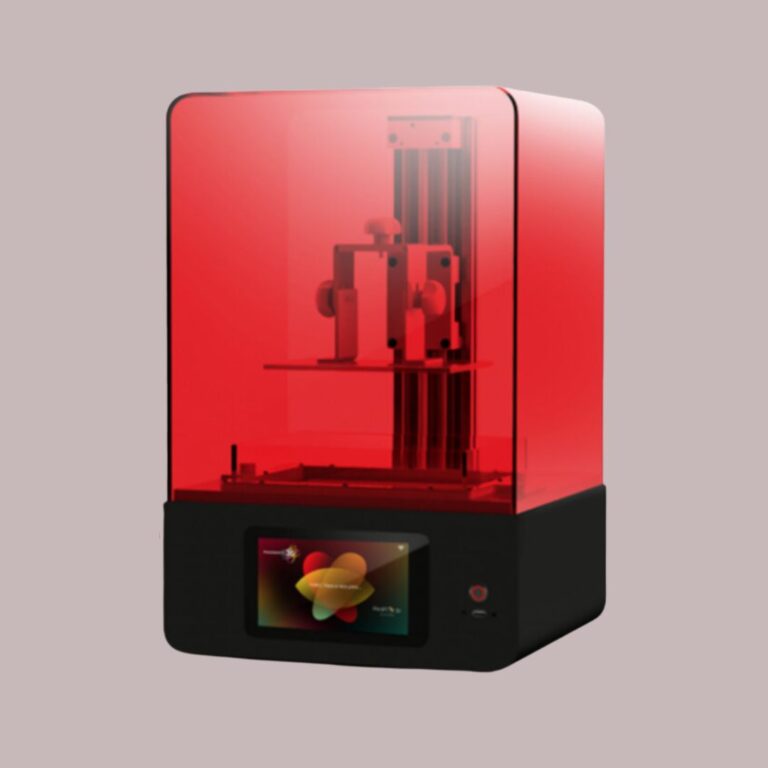
Digital Light Processing (DLP) is a type of 3D printing technology that uses photopolymerization to create objects layer by layer. A light projector shines UV light onto a vat of liquid resin, which solidifies in the pattern of the object being printed. DLP printing is commonly used in industries such as jewelry, dental, and medical for creating high-detail and complex parts. It offers a high level of precision, excellent surface finish, and faster print speeds than other technologies. However, it can be more expensive than other 3D printing methods, and the materials used may have limited durability and strength.
The advantages of DLP are:
- Ability to quickly produce objects and parts
- Prints intricate designs
- high degree of accuracy.
- Relatively affordable
- High level of detail
- Very good surface quality
- Hollowed components are printable
- Material diversity
- Print speed: quickly available, lower unit price
The disadvantages of DLP are:
- Strong odors
- warping in larger items
- Limited build volume
- Requires supports for overhanging structures
- May have issues with layer separation and cracking
- Some resins may be brittle and prone to breaking
- Equipment and materials can be expensive
5. Multi Jet Fusion (MJF)
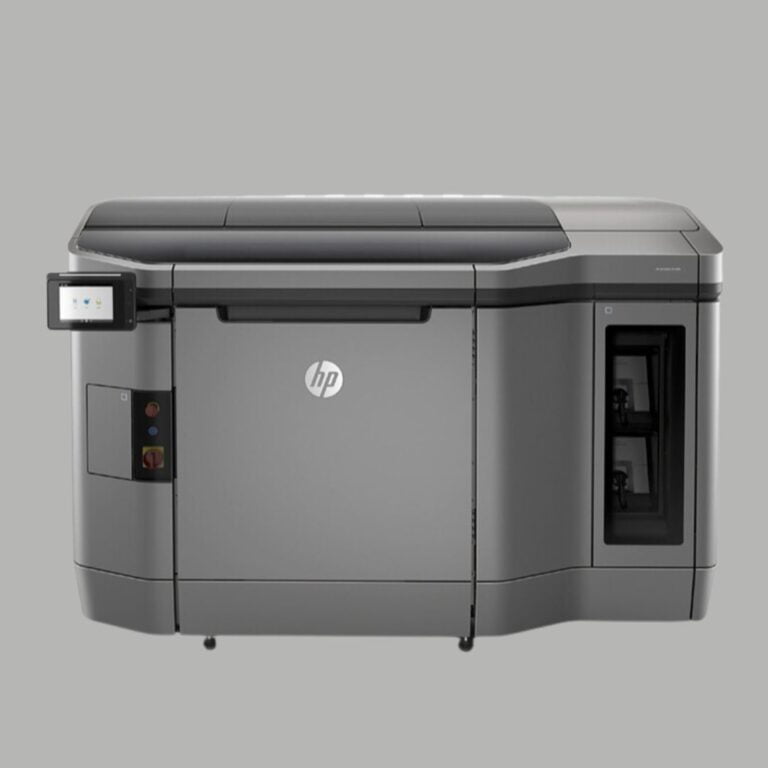
Multi Jet Fusion (MJF) is a 3D printing technology that uses multiple jets to apply fusing and detailing agents onto a powder bed. These agents are then selectively fused by a heating element to create a solid part. Similar to SLS, Multi Jet Fusion also builds functional parts from nylon powder. MJF is commonly used in industries such as automotive, aerospace, and healthcare to create complex, high-resolution parts with excellent mechanical properties.
The advantages of MJF are:
- Mechanically resilient
- No support structures are required
- High component density
- The most complex shapes possible
- Thermally and mechanically resilient
- The very fast manufacturing process
The disadvantages of MJF are:
- Slightly rough surface
- Only single-color models are possible
- Limited materials available compared to other 3D printing technologies
- High upfront costs
- The complex printing process can result in longer production times
- Large build volumes can be limited
6. PolyJet
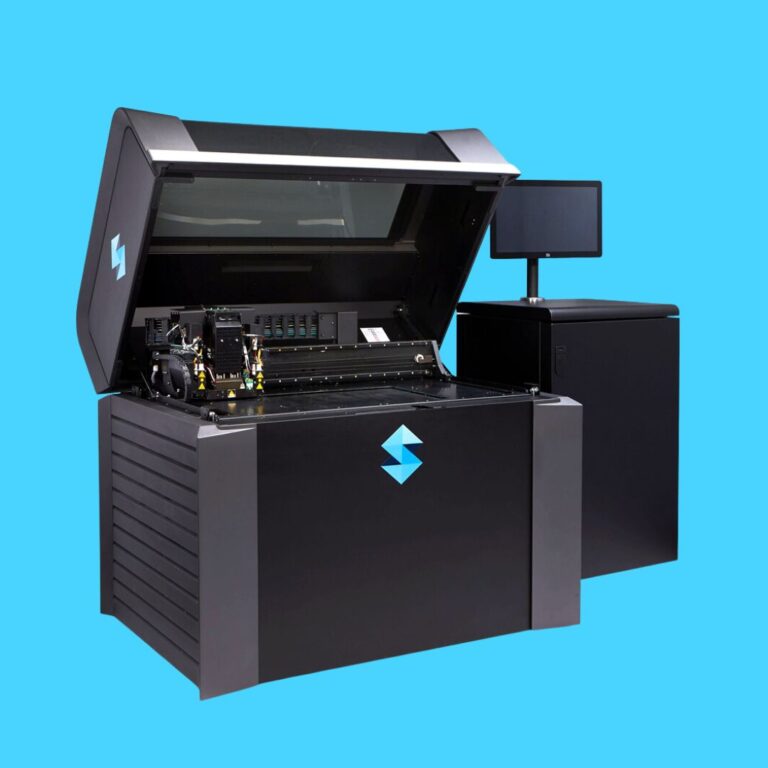
PolyJet is a 3D printing technology that uses a jetting process to deposit liquid photopolymers layer-by-layer. The Materials are then cured using ultraviolet light, resulting in a highly detailed and precise object. The technology is commonly used in industries such as healthcare, automotive, and consumer products.
The advantages of poly-jet are:
- Excellent detail accuracy
- Allows for multiple materials and colors
- Versatile material selection
- Prints are fully cured instantly
- Highly detailed and realistic prototypes and models
The disadvantages of poly-jet are:
- Requires support structures
- High material costs
- Limited build size
- Layer adhesion issues
7. Direct Metal Laser Sintering (DMLS)
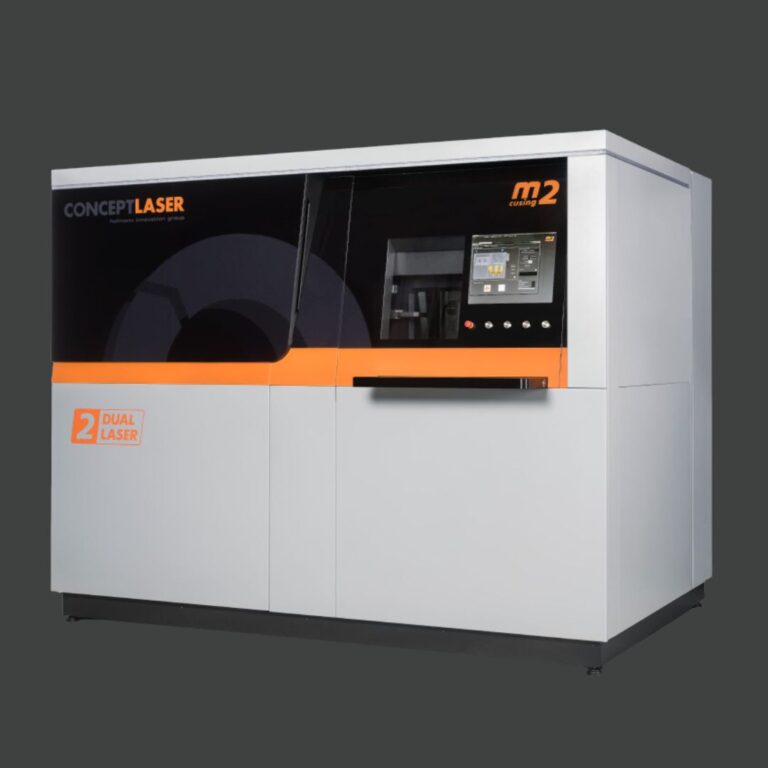
Direct Metal Laser Sintering (DMLS) is a 3D printing technology used in the manufacturing industry for creating complex metal parts. It uses a high-powered laser to selectively fuse metal powder particles layer by layer. Industries that use DMLS include aerospace, automotive, medical and dental, and industrial manufacturing.
The advantages of DMLS are:
- Wide Range of Metals
- Direct Metal Printing
- Production of Strong Functional Parts
- Mass Customization
- Freedom of Design
- Smoothness
- Material Reusability
The disadvantages of DMLS are:
- High Printing Costs
- Small Build Volume
- Slow Printing Speed
- Post-Processing
- Complex
8. Electron Beam Melting (EBM)
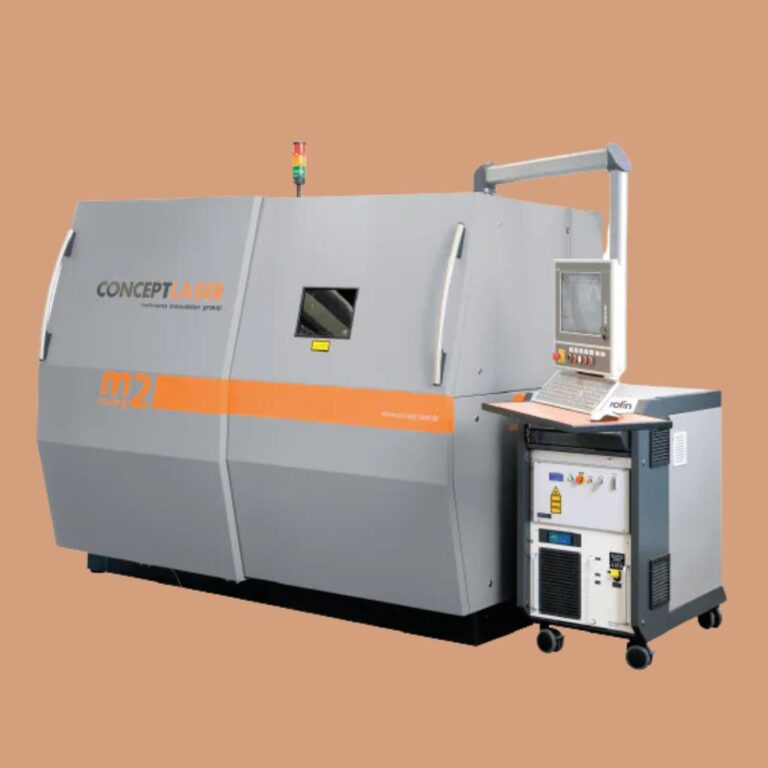
Electron Beam Melting (EBM) is an additive manufacturing technology that uses a high-energy electron beam to melt and fuse metal powders together to create complex parts. The process takes place in a vacuum, which ensures the purity and integrity of the final product. EBM is commonly used in industries such as aerospace, medical, and automotive due to its ability to produce parts with excellent mechanical properties, high precision, and reduced waste.
The advantages of EBM are:
- Minimum material waste
- Less tooling and set-up costs
- Residual stress reduction due to increased process temperature
- High-quality and accurate parts
- Ability to produce complex geometries
- Strong mechanical properties
The disadvantages of EBM are:
- Commercially available materials are limited
- A surface finish similar to sand casting
- Limited choice of materials
- High equipment and maintenance costs
- Long production time
Conclusion
3D printing technology has come a long way since its inception and has revolutionized the manufacturing industry. The emergence of different 3D printing technologies like SLS, SLA, FDM, and others has made it possible to create complex and intricate designs with ease. Each technology has its unique advantages and limitations that make them suitable for specific applications. For instance, SLS is ideal for producing functional parts with intricate geometries, while SLA is better suited for creating prototypes with high precision.
Despite the differences, all these technologies offer a range of benefits, including reduced costs, faster production times, and improved accuracy. With continued research and development, 3D printing technologies are likely to continue evolving and transforming the manufacturing industry in exciting ways.


